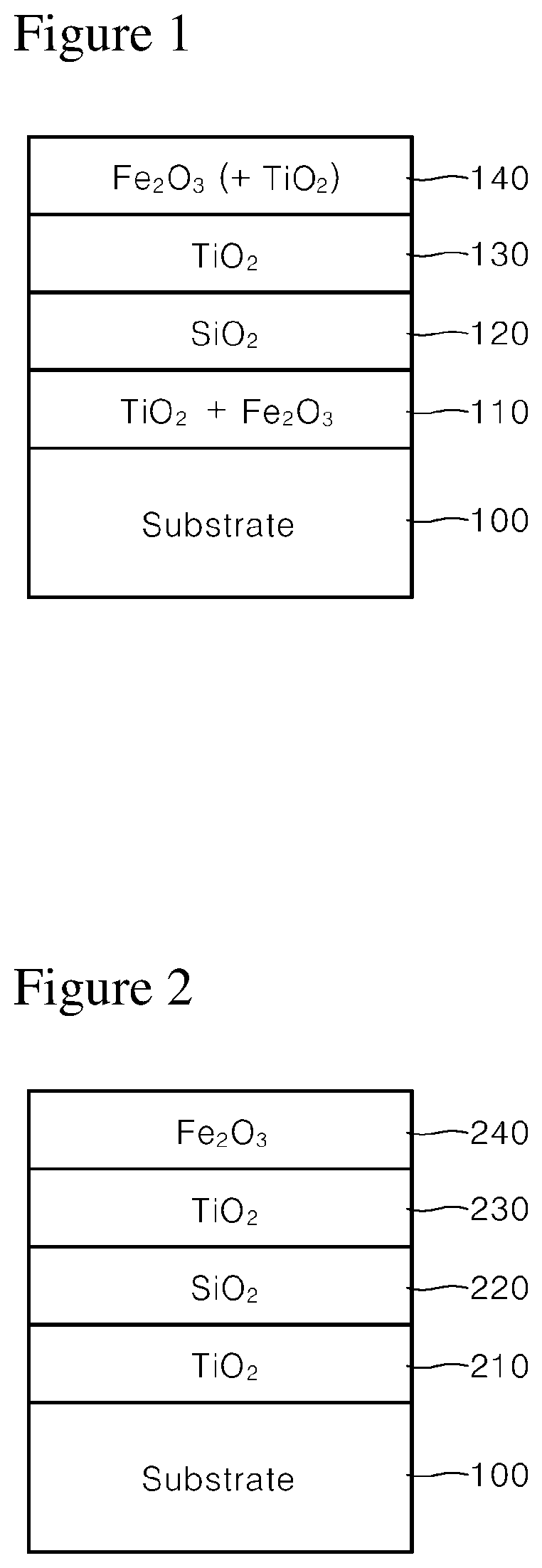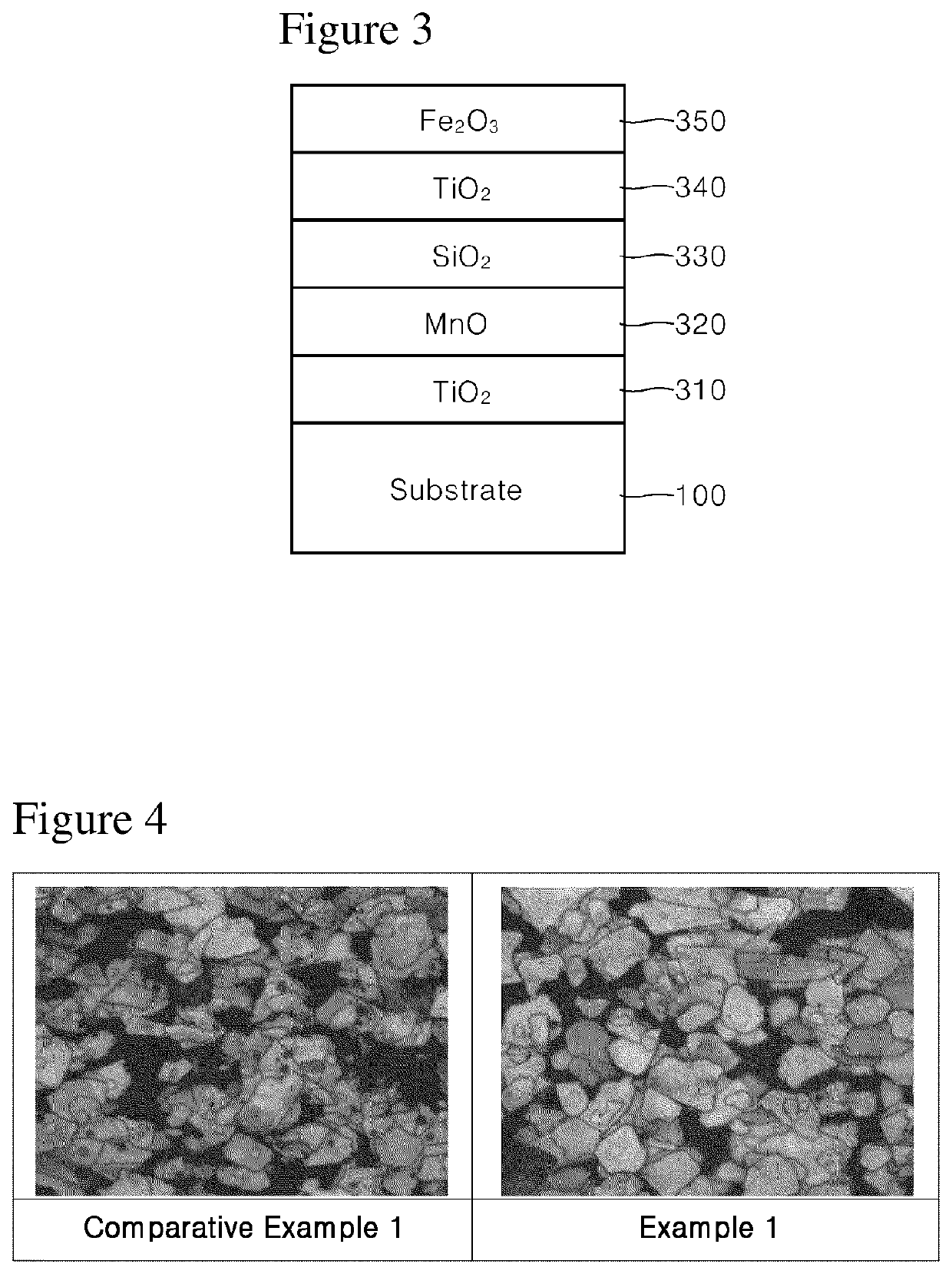Gold pigment with high color strength
a high-color strength, gold pigment technology, applied in the field of gold pigments, can solve the problems of difficulty in properly realizing gold color with lesser red tones required by consumers, and the limitation that gold color is obtained by a combination of white titanium dioxide and red iron oxide in general, and achieves less red tones, excellent gloss, and less reddish.
- Summary
- Abstract
- Description
- Claims
- Application Information
AI Technical Summary
Benefits of technology
Problems solved by technology
Method used
Image
Examples
example 1
[0052]100 g of synthetic mica flakes having a particle size of 5 to 560 μm were introduced into 1 L demineralized water and stirred to form a slurry. Then, after the slurry was heated to 75° C., the pH of the slurry was adjusted to 1.7 by adding an HCl solution (Formation of substrate slurry).
[0053]Then, 30 g of SnCl4 solution (SnCl4 content 11 wt. %) was weighed and titrated in the slurry at a constant rate over 1 hour while the pH was kept constant at 1.7 with 30% NaOH diluent.
[0054]Then, 300 g of TiCl4 solution (TiCl4 content 33 wt. %) was weighed and titrated in the slurry over 8 hours while the pH was kept constant at 1.7 with 30% NaOH diluent. After titration, the mixture was refluxed for 10 minutes, and the pH was adjusted to 7.0 with 20% NaOH diluent (Formation of first coating layer).
[0055]Then, 100 g of MnCl2 solution (MnCl2 content 3 wt. %) was weighed and titrated in the slurry over 2 hours while the pH was kept constant at 6.0 to 8.0 with 30% NaOH diluent. After titrati...
example 2
[0063]100 g of synthetic mica flakes having a particle size of 5 to 560 μm were introduced into 1 L demineralized water and stirred to form a slurry. Then, after the slurry was heated to 75° C., the pH of the slurry was adjusted to 1.7 by adding an HCl solution (Formation of substrate slurry).
[0064]Then, 300 g of TiCl4 solution (TiCl4 content 33 wt. %) was weighed and titrated in the slurry over 8 hours while the pH was kept constant at 2.4 with 30% NaOH diluent. After titration, the mixture was refluxed for 10 minutes, and the pH was adjusted to 7.0 with 20% NaOH diluent (Formation of first coating layer).
[0065]Then, 100 g of MnCl2 solution (MnCl2 content 3 wt. %) was weighed and titrated in the slurry over 2 hours while the pH was kept constant at 6.0 to 8.0 with 30% NaOH diluent. After titration, the mixture was refluxed for 10 minutes, and the pH was adjusted to 7.5 with 20% NaOH diluent (Formation of second coating layer).
[0066]Then, 900 g of MgO.SiO2 solution (MgO.SiO2 content...
PUM
| Property | Measurement | Unit |
|---|---|---|
| pH | aaaaa | aaaaa |
| refractive index | aaaaa | aaaaa |
| thickness | aaaaa | aaaaa |
Abstract
Description
Claims
Application Information
 Login to View More
Login to View More - R&D
- Intellectual Property
- Life Sciences
- Materials
- Tech Scout
- Unparalleled Data Quality
- Higher Quality Content
- 60% Fewer Hallucinations
Browse by: Latest US Patents, China's latest patents, Technical Efficacy Thesaurus, Application Domain, Technology Topic, Popular Technical Reports.
© 2025 PatSnap. All rights reserved.Legal|Privacy policy|Modern Slavery Act Transparency Statement|Sitemap|About US| Contact US: help@patsnap.com


